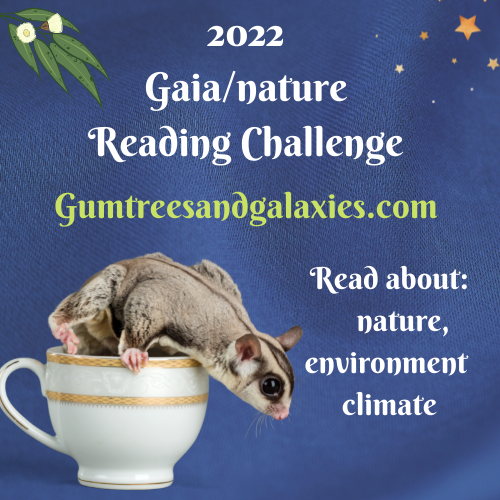I am using this week to catch up on some Gaia/nature reads for younger readers, with Christmas rapidly approaching this seems timely. I last posted about Sami Bayly’s excellent Illustrated Encyclopedia series: The Illustrated Encyclopaedia of Ugly Animals, The Illustrated Encyclopaedia of Dangerous Animals and The Illustrated Encyclopaedia of Peculiar Pairs in Nature. This time I want to post on Sami Bayly’s latest book which I think is an absolute gem if you are looking for a great picture book gift.
Sami is a remarkable natural history illustrator who is using her skill to educate and entertain children and doing it to great effect. The latest book: How We Came to Be: Surprising Sea Creatures is a slightly different format to those previous works. Aimed at slightly younger readers than the Encyclopedia series, still informative and beautifully illustrated, but in a more picture book format with a lower cost point. At $19.95 (Australian), this beautiful book represents amazing value for money. A consideration, of some importance at the moment, when the cost of everything seems to be spiraling and families are struggling to put food on the table let alone books into kids hands.

Firmly targeting the picture book market, it is not as text dense as the encyclopedia series but contains bite-size facts scattered across beautifully illustrated pages. I would have liked a bit more informative text to be honest, although for the intended age of the reader it is an appropriate level of information, but a little more information might have been possible. What I really liked was the way Sami enmeshed herself into the narrative, taking the child reader on a first-person adventure into the sea. She shows herself in a deep sea suit exploring the landscape and meeting the creatures therein, creating an intimate sense of adventure for the reader. Surprising sea creatures is exactly the kind of book that will ignite wonder and curiosity in a young reader and hopefully inspire further information seeking on the topic.

Check out Sami’s website for more information, resources and some beautiful illustration. From the blurb on the book:
Come with us on a deep dive through the ocean zones. Meet some of the most unusual creatures from the sea and hear their stories about how they have changed over millions of years to survive in the inky ocean depths.
Discover why the deepsea flounder is as flat as a pancake, learn all about the 500-million-year-old comb jelly and find out why yeti crabs are so hairy. From the barreleye fish to the tripod spiderfish, prepare to be amazed by the incredible creatures that inhabit our seas.
Another great nature themed picture book I came across recently is Swifty: the super fast parrot by Stephanie Owen Reeder and Illustrated by Astred Hicks. This lovely book tells the story of the critically endangered swift parrot through the story of Swifty; a swift parrot chick, as they journey through life from their hatching in a tree hollow, through to their migration on the blossom trail and return to Tasmania to nest.
Stephanie Owen Reeder and Astred Hicks authentically convey the perils this remarkable little bird faces. While aimed at younger readers this lovely picture book does not sugar coat the realities, but subtly reveals the perils this little bird faces through words and pictures, in an action packed migration adventure.
The story is followed up with the inclusion four information packed pages on the swift parrot and the challenges this critically endangered bird faces, making this a title suitable for the very young reader and the slightly older one, who will find the added information rewarding. A glossary of the more unusual words is also usefully included for the inquisitive child and parent. I strongly suspect we will see Swifty on the lists for next years CBCA awards. And check out this cool promotional video from CSIRO Publishing:
One of the many threats swift parrots face is habitat destruction, perhaps the biggest threat to native species in Australia today, along with climate change. The book that first introduced me to the idea of habitat destruction and the environmental cost of development, was a novel I read in high school; Watership Down by Richard Adams. I stumbled across this interesting article about that classic nature read as I was writing this post. The author rightly suggests that Watership Down is still as “urgently relevant” today as when it was first published fifty years ago. I hadn’t realised this year marked the 50th anniversary of Watership Down, first published in 1972. I think it might be time for a re-read. I do remember the novel as one of the most memorable books I read at that time, although even back then I think I found the lack of strong female characters a bit sexist, but then that was a very different time. So Watership Down is on my list of reads for next year now.
I did start out the year with the intention of posting more on nature titles for younger readers, I have not done as many as I intended but this will be an ongoing category for the Gaia/nature reading challenge. I have to confess I really enjoy good children’s books. Good books really defy age categorization and the best can be enjoyed at any age.
Soon time to retire the 2022 challenge badge, any suggestions for next year’s badge mascot?

